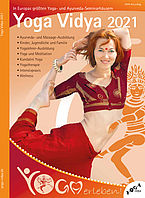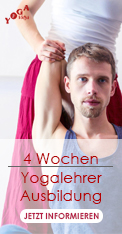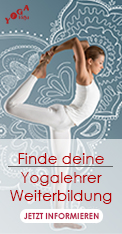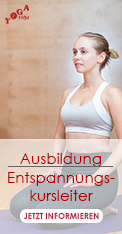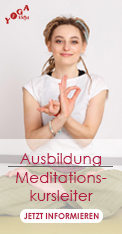
Bearing Witness
Report
about the Annual "Bearing Witness Retreat" in Auschwitz November 2000
by Swami Saradananda
I have
just returned from a ‘plunge’ into the unknowing. The ‘Bearing Witness’
retreat in Auschwitz, organised by the Peacemaker Community, was a momentous
experience on a personal as well as a spiritual level. Also, from a practical
point of view, after organising programmes for the Sivananda Organisation
for more than twenty-five years, it was quite an eye-opener into the ways
that other people organise things.
BACKGROUND
I first met Bernie Glassman, the founder of the Peacemaker Community, about a year and a half ago. He came to the Yoga Camp in Val Morin in the summer of 1999 as one of the key speakers at the ‘Into the 21st Century’ Peace Festival. The transcript of his talk appears in the Winter2000 issue of Yoga Life magazine.While speaking, Bernie mentioned his annual ‘Bearing Witness’ retreat at Auschwitz. For some reason, I was immediately intrigued and mentioned to him that I would very much like to be part of that experience. His reaction was completely open and inviting. The retreat is meant as an inter-faith event, but they had never had any Hindu representative – or any yogis.
When I learned the dates, I realised that there was one big problem – it exactly coincided with the dates of the executive board meeting in the Himalayas. There had to be major changes in my life to enable me to attend.
Things
often work out as we least expect. When I returned from Mount Kailas, I
found a email awaiting me from Genro, of the Peacemaker Community, saying
that Bernie had suggested that I might like to take part in the retreat
as a member of the clergy.
KRAKOW
We were scheduled to meet in Krakow, Poland on Nov 13th, but many participants arrived a few days early. Krakow is an unexpectedly beautiful, old city. It is one of the few European cities that survived WWII virtually untouched. According to my guide book, this is because the Germans loved Krakow so much that they couldn’t bear to bomb it.We
enjoyed ourselves walking around the medieval streets, sightseeing and
drinking coffee in elegant cafes. I could only wonder what the people of
Krakow must have thought when the ashes of Auschwitz dirtied their lace
curtains. The beauty of the city that weekend made it even harder to imagine
the horror that we would begin to confront on Monday.
THE RETREAT BEGINS
After breakfast on Monday, there was a walking tour of Kazimierz, the old Jewish quarter. During the 19th century, it had been the vibrant centre of Jewish culture. As my family comes from Poland, many people had asked me if I felt that my interest in going to Auschwitz was on account of my Jewish heritage. Although this unquestionably played a part, I don’t believe that it was not my prime motive. I had come, as many others had, to put myself into a situation which stuns the mind. When faced with the horrors of Auschwitz, and of the entire Holocaust, the question always is “How could it happen?” It is a question beyond intellectual explanation, and beyond rational understanding. When we come to Auschwitz, we are thrust into a state of ‘unknowing’ – the first tenet of the Peacemaker Community. Then follows ‘bearing witness’, or in the yoga tradition we say being a ‘silent witness’. We watch without judgement – and most important of all, we learn to watch our own minds without judgement. Only then are we ready to act in keeping with our own personal experience – and act we must! This is the Buddhist basis of ‘right action’ – or, as the Bhagavad Gita puts it, ‘action in inaction’. As we tune to the divine energy, action is performed through our bodies and minds, which have become purified instruments.Many people had come from the U.S.; many participants were from Germany and various parts of Europe; there was a contingent from Japan. We were an unusual assortment of people, who probably would never have met if this retreat had not brought us together. The informal experience of walking around the now-unused synagogues and old cemeteries of Kasimiriz gave us the opportunity to introduce ourselves and to form underlying friendships. We asked each other the same questions, “Why are you here? Why did you choose to come on this retreat?”
Today,
Kazimierz is a ghost town which is slowly reincarnating as a tourist attraction.
The Nazis had turned it into a ghetto, and then annihilated the inhabitants.
The Soviet era had seen continued pogroms, and in the late 1960’s all Polish
Jews were offered a one-way ticket to Israel. Very few remain, mostly older
people. Now the area is being rebuilt, mainly with American money. Jewish
restaurants and clubs playing Jewish music are appearing; every summer
there is a Jewish cultural festival.
ARRIVAL AT AUSCHWITZ – A VISION OF HELL
The drive from Krakow to Auschwitz, through the quiet Polish countryside, was a pleasant experience. We dozed in the bus or chatted with our neighbours. After an hour we arrived at the Franciscan monastery which has been built just outside the limits of the former concentration camp. The sun was shining as we entered the stone chapel and descended into a cave-like chamber which contained what can only be described as a ‘vision of Hell’.The artist, Marion Kolodziej, is a survivor of Auschwitz. After the war, he worked as a scene designer in the Polish theatre. Many people knew him as a loving, kindly man – and he never mentioned his experiences. Then one day, many years later, he turned up at the Franciscan Monastery and started painting. His pictures cannot be put into words – they are the stark representations of humanity’s worst nightmares, somehow manifesting in physical form.
Marion himself spoke with great warmth, and apparent lack of animosity towards his former oppressors. He told us that “the only way to stay alive is to stay active. Never let the fire go out. Always stay human and work for the future of humanity. Never become like a robot.
“What
I have painted is my own inner experience. These monsters are within each
one of us. Therefore it is important to have an inner scale and constantly
measure each action we do.”
FIRST SIGHT OF AUSCHWITZ
The concentration camp was originally located in the Polish village of Oswiecim. It was intended as an interment place for Polish and Russian political prisoners. Local people were evacuated and their houses demolished to make way for the camp. There should be no one to inform outsiders of its existence – then the idea grew, and grew …My first impression of the camps, as there were really three parts of Auschwitz, was one of vastness. As we drove by, it seemed to stretch on and on. We did not go into the Camp on the first day, but went to our rooms. Half of the group stayed at the Centre for Dialogue and the rest of us at the Youth Hostel. Conditions were very basic, but with all basic comforts. We were asked to keep our lives as simple as possible for the next few days, out of respect for those who had suffered here.
After registration, we settled ourselves and rested a bit before dinner. The food throughout the retreat was vegetarian and simple. We began each meal with five minutes of silence – and one table was designated for people who wanted to eat the entire meal in silence.
Most people sat together and chatted. It was an opportunity to bond with our fellow pilgrims. I realised that this retreat was a healing journey. Often, when we experience violence, a part of us seems to depart. In many traditional communities there are shamans, people who go into that ‘other world’ and bring back the missing part of the spirit. Family and friends would be waiting to welcome the spirit back. It is important that the spirit return to a loving environment. Otherwise, it feels that ‘nothing has changed’ and again departs. In the modern world, we often lack this support. One great beauty of the Auschwitz retreat was the feeling of community. This provided the necessary safety net, for each participant to go out into the unknown and bring back some missing part of him/herself.
This sense of security was one of the main components of what I experienced as the most extraordinary part of the retreat. We were 141 pilgrims, travelling together. Yet we were told that there were 141 personal retreats going on. In order to enhance each person’s experience, we were divided into small groups. With ten people in each group, we followed the native American technique of ‘Counsel’. There was an experienced ‘facilitator’ in each group, as well as an assistant or trainee. Each person was given the opportunity to speak, but only the person holding the ‘talking piece’ could speak. Thus only one person spoke at a time. There was no cross-talk or interrupting. Each person was asked to speak from the heart about what she/he was experiencing at that precise moment. The others in the group were asked to listen from the heart. No intellectualising was permitted – no talk of what we had heard or had read in books. We were to speak from our hearts, not from our heads.
Unused
to this technique, I felt a bit inhibited at first. But as the retreat
progressed, and we became more comfortable with each other, I was amazed
at the outpouring of Truthfulness. Each person expressed his/her own Truth,
but somehow we felt that we shared the experience. This was amazing in
itself, as there were so many different people there – so many different
types of people. There were Auschwitz survivors, and survivors of other
concentration camps. There were people who had had their entire families
disappear in the camps, and people whose parents had been SS officers.
There were people whose parents had survived Auschwitz, only to commit
suicide many years later, and people whose parents had been shot by the
SS for harbouring Jews. And there were people whose entire family had comfortably
sat out the war.
AT THE EXECUTION WALL
Tuesday morning began with a tour of the Auschwitz museum. I had heard the stories and statistics, as had most of the other people. But it was quite a different experience to be confronted with rooms full of human hair, rooms full of discarded spectacles, rooms of suitcases, rooms of shoes, rooms of children’s toys. It went on and on. The Nazis, in their efficiency, had been into recycling. Nothing went to waste. The human hair had been woven into cloth; the gold teach extracted and melted down. Everything was sorted and shipped back to Germany to be used.We entered Auschwitz through its famous gate, on which had been cynically emblazoned the words “Work is liberating”. We toured the barracks, saw the maps and heard the stories. Finally we ended up standing next to the execution wall. There in the place that had been dedicated to the extermination of differences, we celebrated our differences. There were calls to prayer in six religious traditions: Jewish, Christian, Moslem, Hindu, Buddhist and Native American. The Nazis had killed Jews, Gypsies, homosexuals, Jehovah’s Witnesses, and the handicapped – anyone who was different in any way from their ‘Aryan’ ideal.
Polish
and Russian dissidents had been brought to the execution wall to be shot.
Men and women of the underground resistance had been hung. Ninety per cent
of the people who died in Auschwitz had been Jewish – but many others died
as well. In that place dedicated to the extermination of Jews, the Kaddish
(Jewish prayer for the dead) was celebrated in six different languages.
THE RETREAT – daily schedule
7 – 8.30 am Small groups9 – 10 am Breakfast
10.30 – 11.30 Meditation at the ‘selection site’
11.30 – 12.30 Religious services
12.30 Lunch
1.30 – 2.30 pm Meditation at the ‘selection site’
3 – 4 pm Kaddish (Jewish prayer for the dead) near the gas chambers
5.30 Dinner
7.30 – 9 pm Evening programme
The retreat schedule was a beautiful balance of meditation, prayer and personal expression. We began each morning with our small group counsels at 7 am. This lasted for an hour and a half, and was followed by breakfast. Then we walked, or took the bus, to Auschwitz II, the biggest part of the Camp. Daily we sat on the ‘selection site’ and meditated.
It is just over fifty-five years since the last cattle car arrived. They had come from all over Europe, from as far away as Istanbul, Athens and France, carrying Jews for extermination. The Germans in their efficiency had built a railroad track right into the Camp. This has been featured in several movies; the best known are ‘Schindler’s List’ and ‘Sophie’s Choice’.
When the trains reached their destination, people were herded out by the thousands and made to line up. Men on one side; women and children on the other. They were then ‘selected’ by the SS doctors. The old, children and the weak went directly to the gas chamber. The young and healthy lived in the Camp as slave workers; most died from cold, starvation, exhaustion, disease and subsequent ‘selections’.
At one time there had been 400,000 people living in Auschwitz II – the population of a medium-sized city. The efficiency of the gas chambers increased. We saw the early versions, which could kill ‘only’ seven hundred people at a time. However, the problem was disposing of the bodies – eight could be burned at a time, and each body took almost half an hour. We were told the statistics and found ourselves doing the calculations. By the end of the war, efficiency had greatly increased; seventy thousand people were being murdered in Auschwitz each day. Towards the end of the war, in order to destroy as much of the evidence as possible, the Nazis had blown up most of the gas chambers. Now, only the ruins remain.
Each day we sat and meditated at the ‘selection site’. We chanted the names of many of those people who had died there. Then we walked to the ruined gas chambers. It was a pilgrimage to the abode of God in His destructive form, a glimpse at the face of Lord Siva dancing in the cremation ground.
Religious services were held by six clergy – Jewish, Christian, Moslem, Buddhist, Native American, and Hindu. As the Peacemaker Community is dedicated to the equal partnership of women and men, the clergy representation of each sex was equal.
Daily I sat amidst the ruins of the crematorium and performed Siva puja. I worshipped the beautiful crystal Siva lingam, which was given to me at the end of the Kailas yatra. Each day, at the end of the puja, I marvelled at the many blessings within my own life. In June, I had darshan of Lord Siva in His Himalayan abode, Mount Kailas. In November, just 5 months later, I had His darshan in Auschwitz.
If
‘All is God’ that means that we must learn to see Him not only in sunny
skies and happy faces. It is easy to ‘see’ God in those who are nice to
us. But it is an extreme spiritual test to really behold Him in ALL names
and forms.
AFTERNOONS …
We had been asked to refrain from partaking of food and drink within the Camp itself, out of respect for those who suffered there. We were also asked to keep our intake to a minimum, to survive on only the simple food given to us. However, in the Hindu tradition, no religious observance is finished until all have been fed. The spiritual food must take physical form. At the end of every puja, prasad (blessed food) is given to all. I remembered Bernie saying that whatever anyone did in Auschwitz somehow offended someone else; I worried that my simple act of offering prasad might be taken in the wrong way . Yet everyone seemed very happy when, each day after I finished the puja, I walked outside of the gates and presented a sweet or biscuit to as many of the retreat participants as possible.Lunch was always served outside of the gates of Auschwitz II (actually Birkenau). We were given bowls. These were to be used, kept, washed and brought back the next day – otherwise there was nothing to eat out of. Each day a truck came with soup and bread. It was a simple meal, but as we ate, each of us thought of the ‘hungry spirits’ who still inhabit the Camp. We can no longer give them physical food, but our prayers and good thoughts nourish their souls and help them to find a bit of peace after their long ordeal.
The experience of so many restless spirits is most tangible. Each day, after lunch we returned to the ‘selection site’ for our second sitting and chanting of names. Then we walked to the ruins of the gas chambers for evening Kaddish (Jewish prayer for the dead). People sang songs, people cried, many remembered ones who had perished and/or suffered here. We lit candles around the pond where the ashes had been dumped. Some days, after the Kaddish, many of us walked down into the ‘undressing’ area just before the gas chamber itself. People had come here after a long and distressing train ride. They had been told that they would have a shower before entering the Camp. They were promised a shower and were given a cruel death. They were forced to undress and were herded into the ‘shower’ rooms. In order to reinforce the promise of a shower, the rooms had even been fitted with shower heads. Then the doors were locked and the gas pellets dropped. I’ve read reports that it often took up to fifteen minutes for everyone to die. There was panic and a mad rush for the door. Many died in the stampede.
To
walk into the ‘undressing’ area was a chilling and unnerving experience.
I found it hard to breath. The air was still full of the panic of the many
who had died there.
… AND EVENING PROGRAMMES
In the evening, we met together – all 141 of us. People spoke of their experiences on the retreat. Sometimes we heard from ‘survivors’. One night we were taken to a loft on the top floor of Barracks II. It had been used as a torture chamber. August Kowalczyk, one of the Polish organisers of the retreat gave us a chilling account of his experiences in that very room at the hands of SS officers. He had been in the resistance movement, been caught and taken to Auschwitz. August had tried to escape several times, was tortured, tried again and finally succeeded.Sofia, a delicate Polish sculptress, had survived the infamous Ravensbruck Camp. She, along with many other young woman, had been chosen for the dreaded medical experiments, but had run away. She believed that “Only one who loved and knew that he was loved could survive the horror.”
One afternoon, towards the end of the retreat, I found myself emotionally exhausted. As we finished the Kaddish ceremony near the gas chamber, I suddenly experienced a great wave of negativity. What was I doing here? What good would it do anyway? I thought to go to a movie as a sign of rebellion. Instead, I walked away from the group and through the Camp. I walked and walked, finally boarded the bus and fell asleep. When we reached the Youth Hostel, I went to my room and slept through until morning.
That
was the night that many people kept vigil in the women’s barracks; it was
the one programme that I did not attend. Most people sat, chanted and talked
until around 9 pm, but many stayed the night to sing and meditate.
THE EXPERIENCE
The experience of the retreat was one of unconditional love. I realised that the natural human instinct is to love; that is what makes us human. We feel a kinship with other human beings, and cannot knowingly or deliberately hurt another – UNLESS we ourselves are in pain. The greater our pain, the more we give out hurt. I felt the great torment of the tormentors. What horrible pain they must have been in to have been able to have done all this.I was impressed by the work, planning and money that must have gone into building and maintaining this place of death and torment. Yet out of the ashes of the pain, when we allow ourselves to come face-to-face with the Unknowable, and do not try to judge, great joy can arise.
The final programme, the Shabbat dinner was a manifestation of that joy. We had been together for only five days. Yet we had experienced many lifetimes together. We had laughed and cried together. In my morning group, one of the participants had said something very beautiful, which I felt summed up many of the revelations I had had. I hope that I do not break confidentiality by sharing his words, but they were so beautiful that I had to write them down:
“Love is not about being nice. Love has power to it that is not just sweet. The root of the power of love and that of hate are the same. Hate is only perverted love. The energy that gives someone the power to annihilate falsehood is facing the Truth within him/herself. When this happens, one is free to do anything. One is totally alive with the energy of Love.”
It is important to for each of us to remember the negative activities which we are capable of engaging in – personally and collectively. To make real spiritual progress, we must honestly look at our own defects so that we can know how to remove them. This is an on-going progress.
I would like to thank Bernie Glassman for his incredible, creative vision – which has given so many people the tools to engage themselves in this process. Thanks to Andrzej Krajewski, the Polish co-ordinator, who was really the key to the retreat. Also, my deepest thanks to Eve Marko, Genro, Teju and all the other people who worked so hard and made this transforming event possible. My love goes out to my fellow pilgrims. May the Lord bless you all with great joy.
Yours
in His Service
Swami
Saradananda
“May
we always have the courage to bear witness
to
see ourselves as other
and
to see others as ourself”
- Bernie Glassman
The
authour of this article is Swami Saradananda, a direct disciple of Swami
Vishnu-devananda
and former editor-in-chief of Yoga Life magazine. She
welcomes
any comments or thoughts you may have on the article:
saradananda@cs.com
For
more information on the work of Bernie Glassman and the Peacemaker
Community,
see: www.peacemakercommunity.org
Mehr zu
Yoga und
Meditation
- Yoga Übungen lernst du am besten bei einem Yogalehrer
- Yoga Einführungs-Seminare gibt es in den Yoga Vidya Seminarhäusern als Wochenend- und Wochenkurse. Diese werden auch von Krankenkassen bezuschusst
- Bei Yoga Vidya findest du jährlich fast 3000 Seminare zu Yoga, Meditation und Ayurveda, darunter auch das umfangreichste Yogalehrer Weiterbildungs-Angebot
- In den Yogalehrer Ausbildungen beim Berufsverband der Yoga Vidya Lehrer/innen in 50 verschiedenen Städten lernst Du Yoga, Meditation, Yoga Philosophie, spirituelles Leben und auch, wie Du sie anleiten kannst
- In den Yoga Vidya Zentren gibt es regelmäßige Einführungskurse
- Im Yogalehrer-Verzeichnis findest Du eine/n qualifizierte/n Yogalehrer/in in Deiner Nähe
- Im Yoga-Shop findest Du DVDs, Bücher, Yoga-Matten, Kissen, CDs und vieles mehr für deine Yoga-Praxis
Auf unseren Internet-Seiten findest du viele weitere Informationen:
- mein.yoga-vidya.de - Die Yoga Community: Treffpunkt für Yoga Übende mit Forum, Blog, vielen Yoga Videos und Fotos
- Meditation Anleitung als mp3 Datei - lass dich in die Meditation führen
- Yogastunden als mp3 Datei und Video - lass dich zu einer Yogastunde anleiten
- Spirituelle Vorträge zu Yoga und Meditation - als mp3 Datei zum kostenlosen Download
- Spirituelle Vorträge als Video - kurze und längere
- Yoga Wiki: Alle Sanskrit Ausdrücke erklärt
Yoga Vidya findest du auch in vielen sozialen Netzwerken
Mehr Informationen: Copyright Yoga Vidya e.V.. Vervielfältigung oder Verwendung in Webseiten ist genehmigungspflichtig. Ausdruck für private Zwecke, für Freunde oder für eigene Yoga-Schüler ist gestattet, wenn diese Fußzeile eingeschlossen wird.
|
||||||||||
